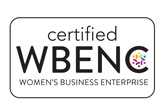Strategic Planning
A clear and effective strategic plan is crucial for an organization’s long-term success. Strategic planning helps organizations set priorities, allocate resources and ensure that all team members are working towards common goals.
However, many organizations face significant challenges when it comes to strategic planning:
- Lack of Clear Vision: Without a well-defined vision, organizations struggle to align their strategies with their long-term goals.
- Ineffective Communication: Poor communication can lead to misunderstandings and misalignment among team members, hindering the execution of the strategic plan.
- Resource Constraints: Limited resources, including time, money, and personnel, can make it difficult to implement strategic initiatives effectively.
- Resistance to Change: Organizational culture and resistance to change can impede the adoption of new strategies and processes.
- Inadequate Data and Analysis: Without accurate data and thorough analysis, organizations may make decisions based on assumptions rather than facts.
Our goal is to help you overcome these challenges and develop a strategic plan that drives your organization towards success. Explore our resources, tools and expert insights to create a roadmap for your organization's future. Let's work together to turn your vision into reality!

Innolect has a successful 25-year track record of working with large, complex organizations to guide their strategic planning processes. We view strategy as a plan or scenario that is built on focused, structured, creative insights, and used to prepare for and manage a VUCA (volatile, uncertain, complex, ambiguous ) future.
We believe that:
- collaboration and communication build the foundation for trust and that it must be established early and maintained to ensure optimal results.
- when colleagues think together collectively and rigorously about the dynamics of an organization’s history and its environment, it brings the greatest value for a client system.
Innolect’s Approach
Step 1: Planning
- Gain agreement on process and requirements.
Step 2: Strategy Team Launch
- Align to vision, purpose and goals
Step 3: Needs Assessment: Environmental Scan
- Situation Analysis
- Competitive Landscape
Step 3: Strategic Planning Process and Key Elements
- Mission/Purpose/Vision
- Recommendation, Implementation and Execution
Step 4: Evaluation and Adjustments

Guiding Principles

Purpose. We believe that the Strategic Plan:
- Guides clients at the highest level by providing direction on policies and actions to bring their vision for its future to life.
- Provides the foundation for annual budget tied directly to the plan.
- Is a collection of the highest-level recommendations that provides direction on how those plans should be updated and implemented.
Structure. We believe that a well-developed strategic plan:
- Offers themes or pillars as the organizing principles for action items.
- Addresses issues and/or topics under the themes/pillars that are interrelated.
- Is holistic in its approach.
- Ensures that budget items are tied to and helps implement the plan.
Equity Lens. We believe incorporating equity and inclusion into the Strategic Plan:
- Helps ensure all stakeholders within the are considered and served.
- Ensures planning practices do not have a disparate impact on any segment of the community.
- Adopts processes that ensure allstakeholders have a voice in shaping the vision and defining strategic priorities.
Innolect guides clients toward:
- Clarity of purpose, goals, objectives, processes and project design.
- Identification of contributions, connectivity and roles.
- Generation of creative insights about possible paths toward that future as well as an appreciation of the risks and payoffs of those various options.
- Understanding of and commitment to communication processes and performance measures that support desired outcomes.
- Development of shared responsibility that includes individual and collective accountability for results.
The strategic planning process:
- Provides a vision, goals and long-term plan.
- Socializes, gains consensus input and commitment among key stakeholders.
- Delivers a proactive, comprehensive strategy with action plans and tactics to address and anticipate a changing environment (engagement, resource requirements, etc.) within 3-6 months.
- Includes a roadmap for workforce and culture.
Strategic Planning Blogs
The Importance of Strategic Planning for Organizations
Strategic planning is more crucial than ever for organizations aiming to achieve long-term success. A well-crafted strategic plan serves as a roadmap to guide organizations toward their goals and help them navigate challenges along the way. However, many organizations face significant struggles when it comes to strategic planning: Lack of Clear Vision: Without a well-defined […]
From Regional to Global: Using a Network Strategy to Align a Multinational Organization (HR People + Strategy)
An article Innolect President Kittie W. Watson collaborated on, along with Maya Townsend and Lisa Coen, was published in the Spring 2017 issue.
Our Services
Growing
Teams
Learn More:
Growing
Organizations
Keynote Presentations &
Webinars
Learn More
Sign up for our Newsletter
Contact Us












MyWorldView

Global Leadership Associates Partnership

Global Leadership Profile (GLP)



